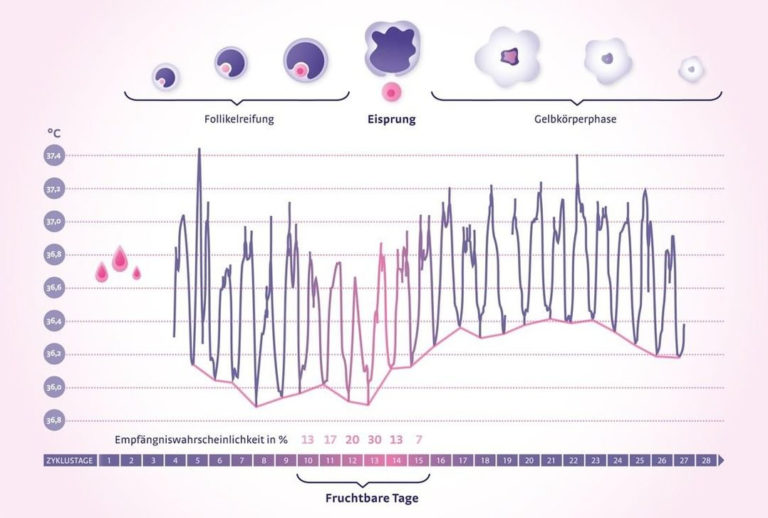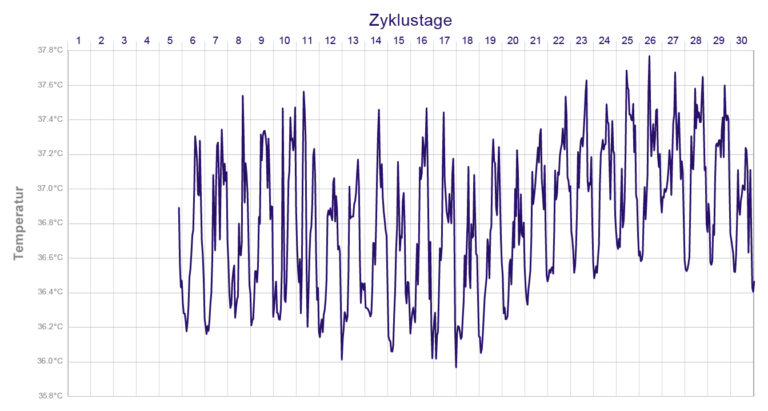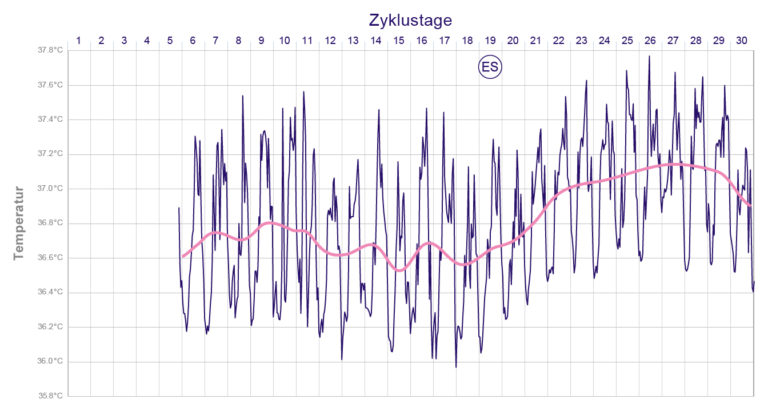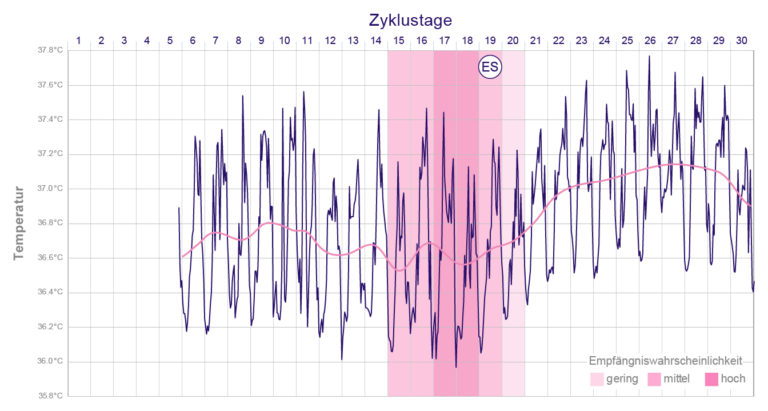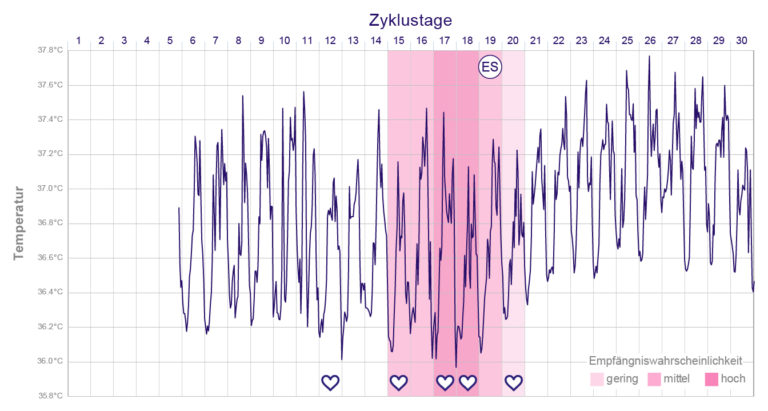Besides body temperature, there are also other signs that indicate the fertile days. Here there are more precise and less precise signs, which are also not perceived in the same way in every woman.
Cervical mucus
The mucus that can be felt at the vaginal entrance is called cervical mucus. As you may have noticed, it changes during your cycle. In simple terms, it is drier, cloudy and rather sticky on infertile days. On fertile days, however, it becomes more fluid and clear due to hormonal processes in the body. You can see this clearly if you take some mucus between your thumb and index finger and pull it apart for a long time. This property is called ‘spinnable’. However, it is not advisable to determine the fertile days solely from the cervical mucus. Many women find it difficult to interpret the cervical mucus in such a way that it can be used to reliably identify the fertile days. A lot of practice and experience is needed here.
More desire for sex
Nature has already arranged this quite well. In order to increase the probability that the fertile days will be used, women usually have more desire for sex during the fertile days. The increased libido also affects the partner and men in general. They can sometimes intuitively interpret these indications. In addition, women also appear more attractive and appealing during their fertile phase. Actually, in our modern, rather stressful times, you should simply let yourself be controlled by your urges. However, not everyone succeeds in doing so, and besides, libido itself is also dependent on many influences.
Midpain
Midpain is a mild to moderate pulling or stabbing pain in the abdomen at the time of ovulation. The name is somewhat misleading. It is based on the fact that in the past it was assumed that ovulation always occurs in the middle of the cycle. However, only about 30% of women consciously perceive the mid-cycle pain. Some women also report that they can assign the pain to one side of the body. The cause of midcycle pain has not yet been conclusively determined. It has also not yet been proven whether this ovulation pain starts, for example, a few hours before, during or even after ovulation.
Cervix
Observing the cervix is another physical sign of your fertility. However, it takes some practice and experience to correctly feel the changes in your cervix. On infertile days, the cervix tends to be firm and closed. In this state you can feel it well. Contrarily, on your fertile days the cervix opens slightly and is softer. In that case, you will not be able to feel it as clearly. You should only use the changes in your cervix in combination with the observation of the cervical mucus and the measurement of the core body temperature.
